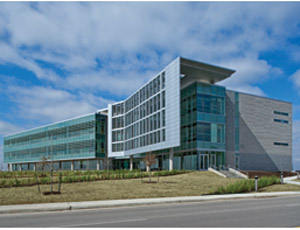Submitted by Turner Construction
The architectural planning and design of the replacement Laguna Honda Hospital and Rehabilitation Center is a story of renewal.

The design of the 500,000-sq-ft, $410-million replacement hospital and the 150,000 sq ft of renovations of this landmark site is about celebrating the rich history of the institution in providing free and accessible healthcare to the city’s most needy constituents while implementing state-of-the-art healthcare facilities to serve the city for the next 50 years.
It is a story of celebrating a San Francisco landmark – respecting its original architectural vision and recognizing its social significance in the community thereby integrating its design into the cultural fabric of the surrounding neighborhoods.
Originally opened in the 1860s as an alms house for the poor, the Laguna Honda Hospital is now one of the country’s most advanced long-term care hospitals for seniors and adults with disabilities. It is California’s first green-certified hospital, achieving LEED silver certification in July, 2010.
With the Laguna Honda Replacement Hospital OSHPD project, the team faced many challenges beginning with reducing the cost of the project to make the new facility economically viable so that there could be a construction project. Bid packages were structured to encourage competitive bid pricing and packages were broken out into small enough increments to encourage participation from local small and minority businesses as required to meet the city and county of San Francisco’s contracting requirements.
The buildings were released in phases. However, each phase was dependent on completion of critical elements and systems in adjacent phases OSPHD approval could be obtained. For example, the South Residence contained the heating hot water, domestic hot water and equipment associated with the medical gas systems for all the buildings; the Link building contained the electrical switchgear, emergency generator and the fire pump room for all three buildings. This required the South Residence and Pavilion to be completed simultaneously, creating some healthy competition among building superintendents and subcontractor teams.
To achieve its LEED silver certification, the project’s design and construction teams worked diligently throughout the project to track progress toward the goal. During the contract process some revisions were made, such as introducing fly ash into the lightweight concrete and architectural concrete mix design and confirming the mechanical system was designed and operated as required to achieve the necessary “heat recovery” required to LEED points.
Project Team
Developer/Owner: City & County of San Francisco
Construction Management: Turner Construction Co., Oakland
Architect: Anshen + Allen and Stantec Architecture, Laguna Honda Joint Venture Architects, San Francisco
Civil Engineer: AECOM, San Francisco<
Structural Engineer: Forell/Elsesser Engineers, Inc., San Francisco, and Rutherford & Chekene, San Francisco
MEP Engineer: Arup & Partners California Ltd., San Francisco
Subcontractors: Ansari Structural Engineers, San Francisco; Bello & Associates, San Francisco; F.W. Associates, San Francisco; Fougeron Architecture, San Francisco; Powell & Partners Architects, San Francisco; URS Corp., San Francisco

Post a comment to this article
Report Abusive Comment